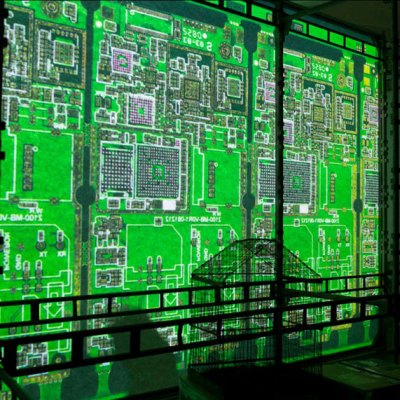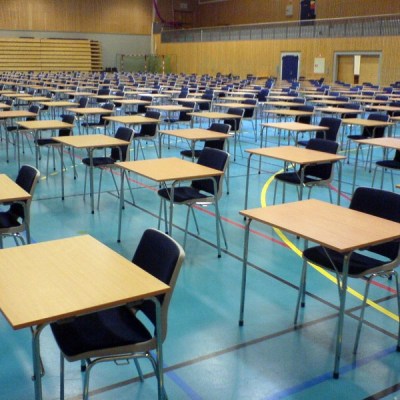‘J.M.W. Turner: Adventures in Colour’, the major exhibition recently opened at Turner Contemporary in Margate, ends in disaster. The final gallery is dominated by The Deluge (1805), Turner’s dark, dramatic image of watery cataclysm, in which he hurls a writhing mass of naked humanity into the path of a vast tsunami. The painting is an abrupt departure from the rest of the exhibition, which explores the artist’s experimental use of colour throughout his career, and also surveys his lifelong engagement with that most un-apocalyptic of seaside towns, Margate. It is a show that brings out Turner’s versatility across a variety of media and genres, but there is nothing to forewarn us of this final doom.
The Deluge (1805), J.M.W. Turner. Tate, London
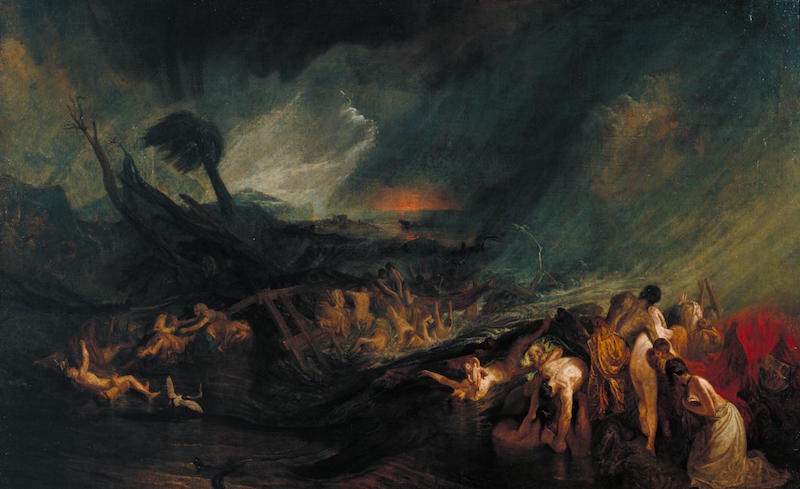
The Deluge has been included to act as a bridge between the Turners and a contemporary film installation being shown concurrently in an adjacent room: John Akomfrah’s Vertigo Sea. Partnering historic and contemporary art is a risky business that has a tendency to work better in theory than in practice. But on this occasion it is a potent combination; the Turners and Akomfrah’s work play off each other in surprising and illuminating ways. Vertigo Sea explores the sublime beauty and horror of the sea, and yet more than holds its own alongside the storms and seascapes of Turner – Britain’s greatest marine painter.
Vertigo Sea is an installation of three large screens on which is projected a shifting montage of film clips that combine to present a prolonged meditation on man’s troubled relationship with the sea. No summary can do justice to the range of imagery that appears in the piece. Much of it is extremely beautiful footage of the oceans, natural landscapes and wildlife made by the BBC Natural History Unit. Interwoven with this are archive news clips that add a human dimension: refugees in boats, arctic expeditions and whaling voyages, for example. And added to the mix are a series of tableaux vivants which show actors dressed as historic figures who act as onlookers to the other scenes. The imagery is restless, washing back and forth across the triptych of screens in a rhythm that is reminiscent of the sea itself. At times compelling, perplexing, or appalling, it maintains an uneasy mix of beauty and horror, and avoids settling into a consistent aesthetic or single narrative.
Still from Vertigo Sea (2015), John Akomfrah
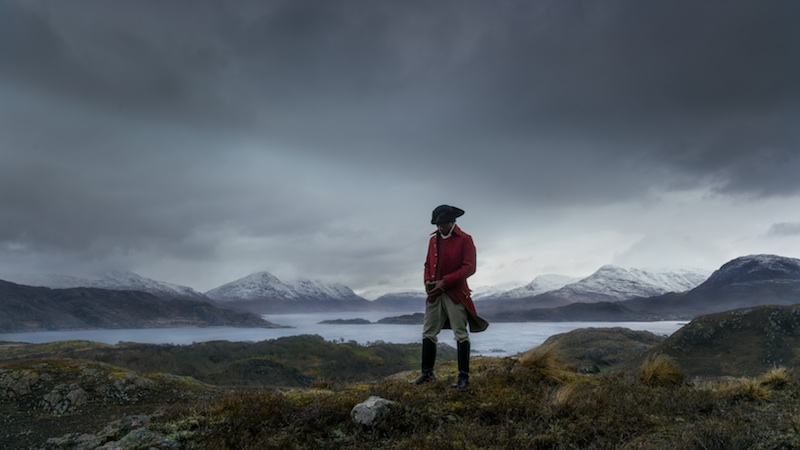
There’s a lot going on here. Migration is a recurrent theme, and particularly the fate of refugees forced to make perilous ocean crossings. People drown, and their bodies wash up on the shore. Similarly, there are references to the slave trade and to the human cargoes that were thrown overboard for commercial gain. The whaling industry also features prominently, presenting humanity in a different relationship with the sea, but one equally marked by cruelty and exploitation. Through the film’s different modes of witnessing – wildlife documentary, historical recreation, news reportage and imaginative literature – it calls into question our position as impartial observers to the ocean’s dark and violent history.
Installation view of Vertigo Sea (2015), John Akomfrah. Photo: Stephen White
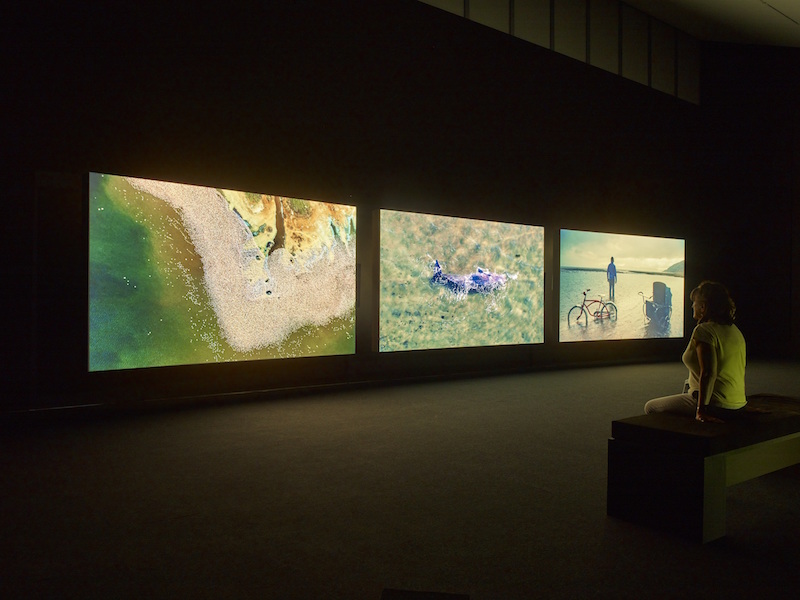
Akomfrah describes his approach to filmmaking as bricolage – the mixing of fragments of history and memory in order to allow new meanings to emerge. With Vertigo Sea he is addressing current questions about displacement, migration and the refugee crisis. He speaks in particular about the dehumanising rhetoric that allows migrants to be described as a contagion, or as ‘cockroaches’, a development he describes as amnesia, a deliberate forgetting of the historical context in which these current events should be seen. But Vertigo Sea is effective because it does not broadcast a message. It presents a vivid and overwhelming visual experience, but leaves space for the viewer’s imaginative response to the film’s imagery.
Study of Sky, Sea and Shore, Margate (c. 1844–45), J.M.W. Turner. Private collection
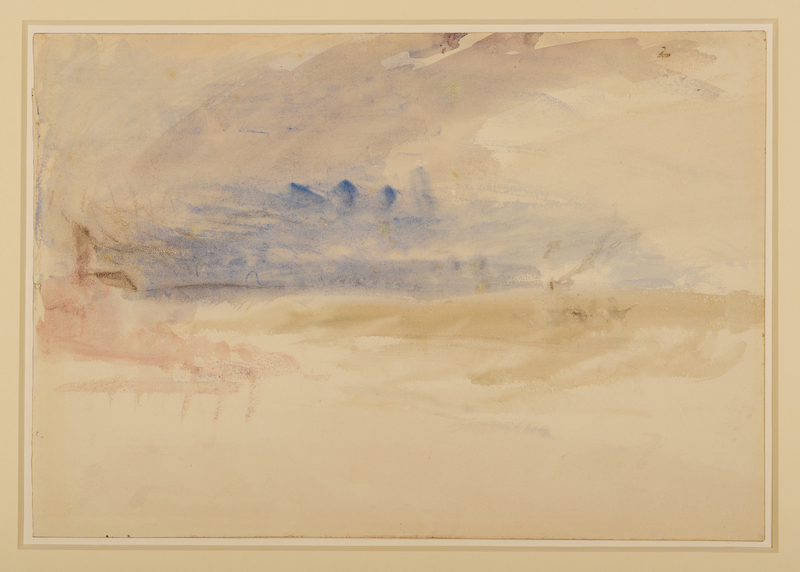
Vertigo Sea has obvious resonances with Turner’s work. Akomfrah recalls visiting Tate when he was a child and being inspired by Turner’s storms and shipwrecks. For Turner, the sea was a stage for human drama, where man’s vulnerabilities were laid bare. And he too made slave ships and whalers his subjects. But the sea is not the dominant theme of the current Turner exhibition: more important here are the elements of air and light, and the way Turner developed radical, and often controversial, uses of colour to capture the effects of light through air.
Surprisingly, this is the first major exhibition to explore Turner’s use of colour. It is a well-curated show, bringing together over 100 works, some rarely seen, others well-known masterpieces, but here looked at afresh. However, next to Akomfrah’s work, the theme of colour takes on an abstract, dispassionate quality. Returning to the Turner exhibition after seeing Vertigo Sea, I found myself ignoring Turner’s colour, but seeking out instead the human figures that populate his paintings. They are often lumpen, unlovely creatures – Turner was, and is, often derided for the way he painted people – but they are essential to his art. Look again at the shivering girl in Frosty Morning (1813), the crooked gleaners in Calais Sands at Low Water – Poissards Collecting Bait (1830), or the flood victims in The Deluge, and we remember that he was an artist who was concerned with more than sunlight and vapour. He felt a deep sympathy for vulnerable humanity and its struggle in the face of the overwhelming forces of history and nature.
Calais Sands at Low Water – Poissards Collecting Bait (1830), J.M.W. Turner. Bury Art Museum, Greater Manchester
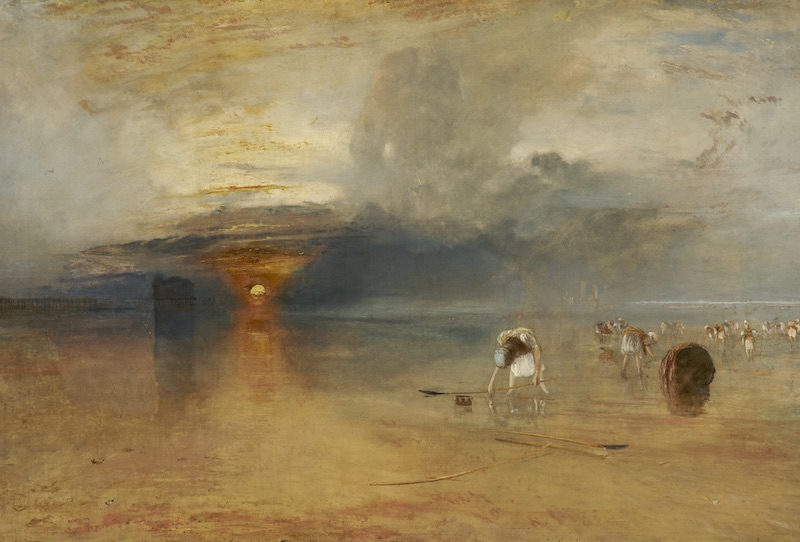
‘JMW Turner: Adventures in Colour’ and ‘John Akomfrah: Vertigo Sea’ are at Turner Contemporary, Margate until 8 January 2017.

